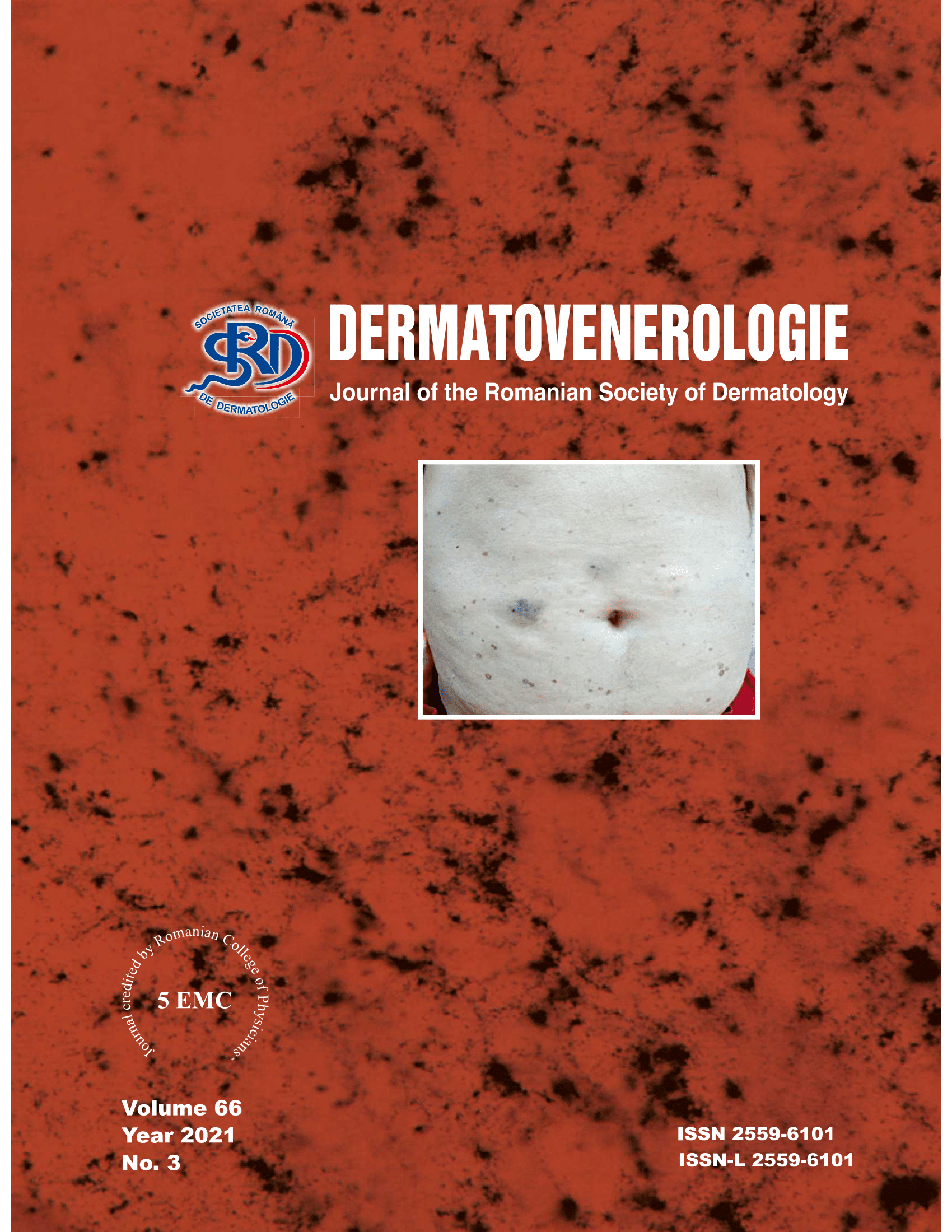Summary
Relapsing polychondritis is a rare, autoimmune inflammatory condition that involves cartilaginous structures, predominantly those of the ears, nose, and tracheobronchial tree. Other affected structures may include the cardiovascular system, peripheral joints, skin, middle and inner ear, eyes, and central nervous system. Systemic corticosteroid therapy is the treatment of choice. In recent decades, viral infections have been proposed as environmental factors that trigger autoimmunity in genetically predisposed individuals. Respiratory viruses, especially parainfluenzae and coronaviruses, have been associated with the onset of rheumatoid arthritis, while growing evidence describes the occurrence of autoimmune disorders in COVID-19.
Clinical case. A 31-year-old patient presented in October 2020 for infiltrated erythematous-edematous plaques, highly painful, located in the auricles, bilaterally. The disease started a month ago. The patient applied the antibiotic and dermatocorticoid cream locally, without a favorable evolution. From the medical history we notice that the patient presented 4 months ago pain in the radio-carpal joints, later in the joints of the knees and ankles for which she presented to the Rheumatology department. Two weeks ago, she presented with pain in the nasal pyramid and at the eye level. She was diagnosed with chronic hypertrophic rhinitis and conjunctivitis, respectively. The pharyngeal exudate showed Klebsiella pneumoniae present. The other laboratory tests were within normal limits. The patient had a history of asymptomatic infection with SARS-VOC-2 virus, diagnosed by highlighting specific antibodies during investigations to establish the etiology of polychondritis. We performed a biopsy of a fragment of the skin, along with the underlying cartilage, in the pavilion of the left ear. Based on the clinical examination and the histopathological examination, we specified the diagnosis of relapsing polychondritis. We started treatment with Methylprednisolone 32 mg / day, Famotidine 40 mg / day, Rupatadine 10 mg / day, Levofloxacin 500 mg / day, with a slightly favorable evolution. Methotrexate 10 mg / week treatment was also initiated in December 2020.
Discussions. Relapsing polychondritis is a progressive autoimmune condition that affects several organs and tissues. Early recognition of the signs of this rare disease and prompt initiation of anti-inflammatory and immunosuppressive therapy can relieve symptoms and prevent complications, especially those affecting the respiratory tract and heart.
Conclusions. The number of case reports describing autoimmune phenomena in COVID-19 is increasing, and these conditions may involve different organs and systems. Although the chronology of pathologies in our case suggests the possible involvement of SARS-CoV-2 infection in the occurrence of Polychondritis, we mention that so far no cases of relapsing Polychondritis associated with this viral infection have been reported.


